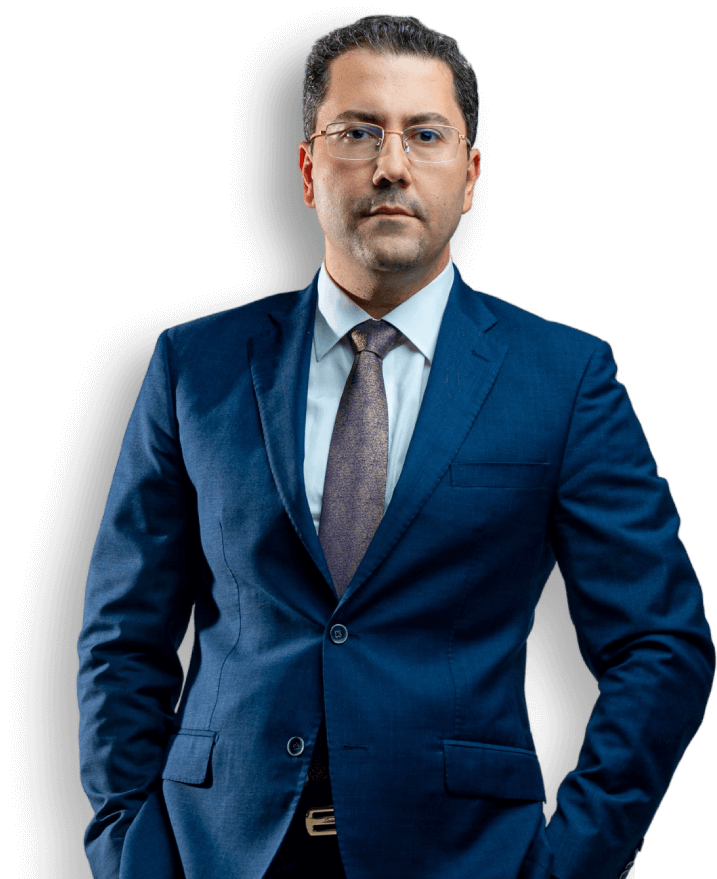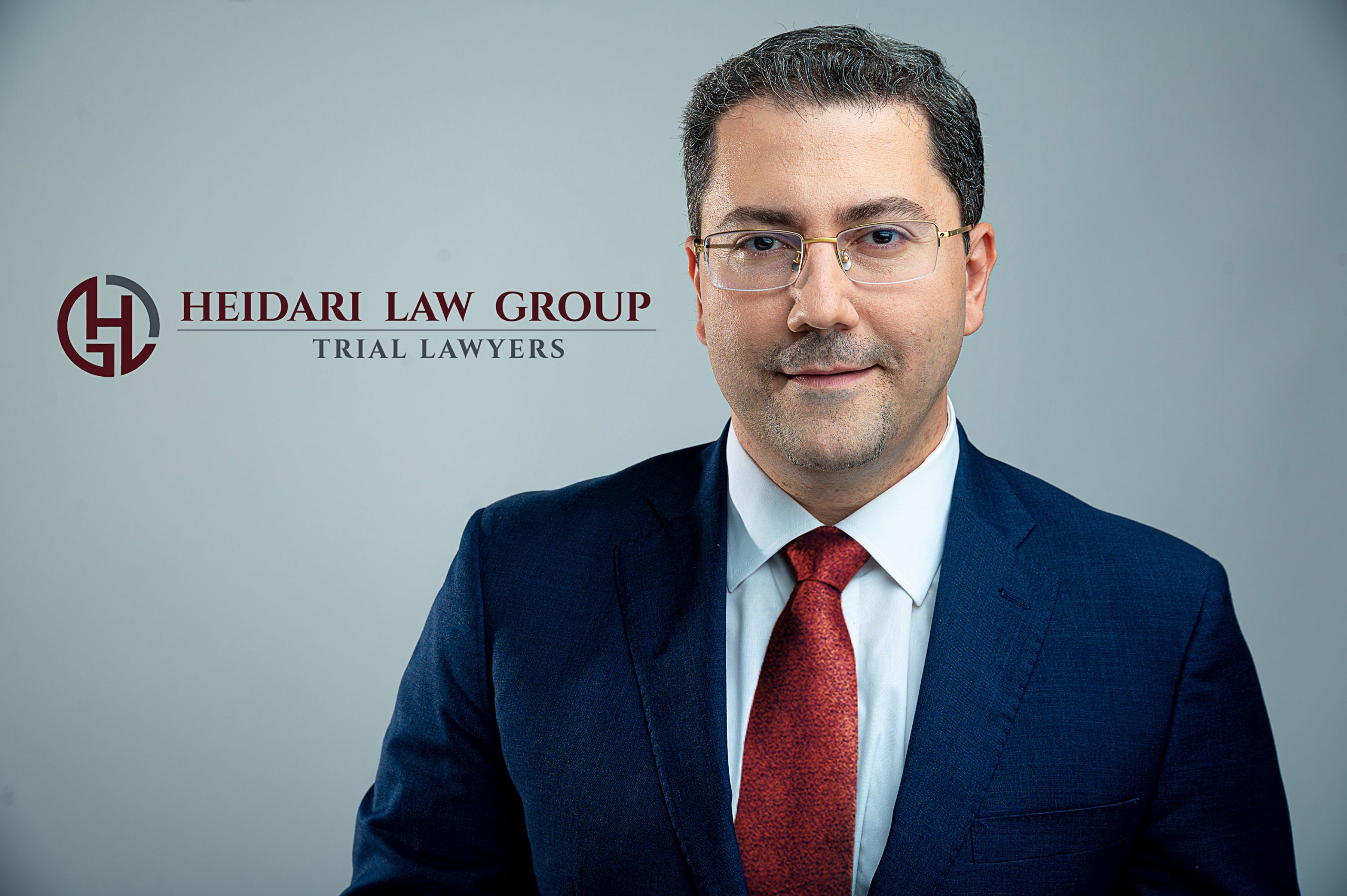No one is perfect, and unfortunately, there is always a chance of error. Doctors go to school for several years and study medicine to care for the community. This recent year has led to an increased public appreciation for our brave frontline workers, especially here in Los Angeles, California. There is a high level of care we expect from our doctors, but performing below this level of care can cause serious injuries, or oftentimes, death. Performing below the expected level of care can range from a routine checkup to a serious surgery gone wrong. Sometimes these mistakes lead to a medical negligence or malpractice lawsuit. Our personal injury attorneys at Heidari Law Group will help you understand the difference between the two, and take legal action.
Many think that medical malpractice and medical negligence are lawsuits that can only be brought against a doctor, but that is incorrect. A claim can be brought against a doctor, nurse, physical therapist, medical facility, laboratory, or any health care provider or facility licensed by California that is responsible for the patient’s injury.
The medical field is very broad, and so sometimes it could get tricky when deciding to file a medical malpractice or medical negligence lawsuit. Sometimes it may seem like the two types overlap, but there are some key legal differences that could help patients decide what type of medical situation they are facing. Medical negligence is a sub-category of medical malpractice. Common California malpractice cases include misdiagnosis, nursing home abuse, failure to monitor patients, and surgical errors.

Medical Negligence
Generally, medical negligence is when the patient is harmed because of a mistake on the part of the healthcare practitioner. This occurs when the professional makes a mistake with a good faith belief that they were within the standard of care when in reality they were not. This includes unintentional acts of carelessness. For example, when a surgical nurse accidentally left a medical tool inside the patient’s body after the surgery, the nurse was negligent.
The common test to see if the professional acted within the standard of care is to ask whether a reasonably prudent doctor, nurse, or surgeon would have done the same thing in a similar position. Under California law, courts often rely on expert testimony to establish what the standard of care is in a given case (California Evidence Code § 801). For instance, in Flowers v. Torrance Memorial Hospital Medical Center (1994), the California Court of Appeal reaffirmed the necessity of expert witnesses in determining negligence in medical malpractice claims. The failure to provide health care services under the medical standard would be considered negligence. To show this, an expert witness could testify in court that the professional acted in a way that is not within the standard of care. A majority of medical mistakes that result in patient injuries are classified in California as medical negligence rather than malpractice.
Medical Malpractice
Medical malpractice is generally when a healthcare professional intentionally fails to provide a certain level of care to the patient, and this failure caused the patient’s injury. In this case, the professional knew or should have known that their actions (or inaction) would lead to the patient’s injury.
The professional may be guilty of malpractice if he or she knew that an action would result in a harm, and still did the action anyway. For example, a doctor knows that the patient needs more tests to diagnose a seizure but does not run any more tests. By not running more tests, the patient has a second seizure because of an undiagnosed underlying illness. This is an example of how inaction can lead to medical malpractice.
Key Differences
Intent and knowledge are the key differences between the two types of cases. Negligence is unintentional, whereas malpractice is more deliberate. Malpractice is a stronger charge. Although no medical professional deliberately would want to harm their patient, malpractice focuses more on the “conscious choice.” This conscious choice is the intent to perform some action while knowing it could result in harm to the patient. Malpractice is when a healthcare professional knowingly deviates from the standard of care, which results in harm to the patient. This does not mean the doctor intended to harm the patient, but rather that they were aware or should have been aware that their actions could lead to injury. A classic example is a doctor failing to check a patient’s allergy records before prescribing medication, despite clear indications in the medical file. If the patient has a severe allergic reaction, the doctor may be liable for malpractice. Just because the healthcare professional was negligent, does not mean the case is a medical malpractice case. However, negligence forms the grounds for a medical malpractice claim.
Proving Fault
Whether the case is medical malpractice or negligence, a connection must be established between the healthcare professional and the injury. Below are four elements necessary to build a strong case that a patient must prove:
- Duty: A duty is an obligation the healthcare professional owed to the patient. For example, a doctor’s duty is to follow the standard of care of a healthcare professional.
- Breach: A breach is when the healthcare professional does not do what they were supposed to do under their obligation (duty) to the patient. For example, if the doctor saw a broken bone in an X-ray, but failed to tell the patient, the doctor did not follow the standard of care.
- Causation: Causation is when the failure to follow the standard of care leads to harm. For example, failing to tell the patient about the broken bones in his X-ray led the patient’s condition to worsen, and become harder to treat.
- Damages: Damages are what the patient is seeking as a result of their injury. If the patient is not injured, they cannot sue for negligence or malpractice. For example, damages are the extra medical care needed to care for the patient’s broken bones that were left undiagnosed for months.
Above are elements our attorneys at Heidari Law Group will build-out, in order to achieve a strong legal claim for medical malpractice.

Types of Compensation Available in Medical Malpractice Cases
Patients who successfully prove medical malpractice or negligence may be entitled to compensation under California law. Damages typically fall into three categories:
-
Special Damages (Economic Damages) – These include tangible financial losses such as:
- Medical expenses (hospital stays, surgeries, medications)
- Rehabilitation costs (physical therapy, home health care)
- Lost wages due to inability to work
-
General Damages (Non-Economic Damages) – These account for pain and suffering, emotional distress, and reduced quality of life. California caps non-economic damages at $250,000 under the Medical Injury Compensation Reform Act (MICRA).
-
Punitive Damages – Awarded in rare cases where the healthcare provider’s actions were reckless or malicious. For instance, if a surgeon operates under the influence of drugs or alcohol, a court may grant punitive damages.
Compensation
If a case contains all four elements above, a patient could successfully be eligible for compensation for their losses. Damages depend on each claim’s circumstance. California’s legal compensation includes different types of damages, such as special damages, general damages, and punitive damages. Special damages are damages that could be calculated, like medical bills (doctor visits, medications, surgeries). General damages are harder to calculate and include pain and suffering and emotional distress. General damages are considered non-economic, and California caps the amount the patient could collect at $250,000. Punitive damages from medical malpractice lawsuits are extremely rare in California but are allowed when there is clear and convincing evidence the healthcare professional acted intentionally or had a conscious disregard for the health and safety of the patient.
Timing
In California, there are strict statutes of limitations that determine how long a patient has to file a medical malpractice lawsuit. Generally, an adult must file within three years from the date of injury or one year from when they discovered (or reasonably should have discovered) the injury whichever comes first (California Code of Civil Procedure § 340.5). However, there are exceptions. For instance, if the malpractice involved a foreign object left inside a patient’s body, the time limit may be extended. Additionally, minors under six years old have a longer timeframe to file, typically until their eighth birthday. If a patient does not file a claim within that time, they will lose their right to sue. Therefore, it is very important to seek assistance from Heidari Law as soon as you believe you have a case.
In California, a medical malpractice claim can be brought for an adult within 3 years from the date of injury, or 1 year after the patient discovered (or should have discovered) the injury, whichever comes earlier.
Medical malpractice cases can be very complicated, and so our best recommendation is to seek the assistance of a law firm with qualified experience. The medical field is very broad, and legal experience is needed to be able to handle the different types of medical claims in a lawsuit. It is very important to understand that that not every case would result in an automatic malpractice claim. This a very difficult situation to be in, especially if loved ones are affected. Our experienced attorneys at Heidari Law Group will be able to assist you in deciding what type of medical claim you may have, and how to achieve financial recovery.
Frequently Asked Questions
What is the difference between medical negligence and medical malpractice?
Medical negligence occurs when a healthcare provider makes an unintentional mistake that causes harm, even though they believed they were acting within the standard of care. Medical malpractice, on the other hand, involves a healthcare provider knowingly failing to meet the standard of care, which leads to patient injury. While negligence is a basis for malpractice, not all negligence cases qualify as malpractice.
How do I prove a medical malpractice case in California?
To prove medical malpractice, you must establish four key elements: duty, breach, causation, and damages. This means showing that the healthcare provider had a duty to treat you, failed to meet the standard of care, and directly caused your injury, resulting in measurable harm. Expert testimony from a medical professional is usually required to demonstrate that the provider’s actions deviated from accepted medical standards.
What is the time limit for filing a medical malpractice claim in California?
Under California Code of Civil Procedure § 340.5, adults must file a claim within three years from the date of injury or within one year of discovering (or reasonably should have discovered) the injury—whichever comes first. Exceptions exist for cases involving minors and foreign objects left in the body, which may allow for extended filing deadlines. Missing the statute of limitations means losing the right to seek compensation, so it’s important to act quickly.
What types of damages can I recover in a medical malpractice lawsuit?
California law allows victims of medical malpractice to recover special damages (medical bills, lost wages), general damages (pain and suffering), and in rare cases, punitive damages if the provider acted recklessly. However, non-economic damages (pain and suffering) are capped at $250,000 under the Medical Injury Compensation Reform Act (MICRA). The exact amount of compensation depends on the severity of the injury and its long-term impact.
What should I do if I suspect medical malpractice?
If you suspect medical malpractice, start by gathering medical records, documenting symptoms, and seeking a second opinion from another healthcare provider. It’s also essential to consult a medical malpractice attorney who can evaluate your case and determine whether legal action is viable. Since malpractice cases require expert testimony and extensive evidence, getting legal assistance early can improve your chances of success.
Contact the Heidari Law Group
Contact the Heidari Law Group for a reliable medical malpractice attorney. Whether you’re in California or Nevada, Heidari Law Group will be there to assist you. Heidari Law Group has offices in Fresno, California, Sacramento, California, Los Angeles, California, Irvine, California, and Las Vegas, Nevada. Call for a free case evaluation today!
Disclaimer: This blog is created by Heidari Law Group for educational purposes. This article provides a general understanding of the law. It does not provide specific advice. By using this site and reading through this blog, there is no attorney-client relationship created between you and any member of Heidari Law. Further, due to the constant change of the law, some parts of the information above may no longer be good law.



